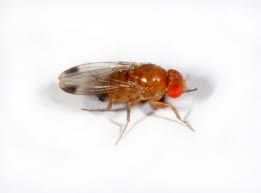22 September 2014 Yohan Castaing sends this first worrying report from France. Below, Gareth Skidmore supplements last week's report from the Côte de Beaune in Burgundy.
A recently arrived Asian fruit fly is compromising the quality of the 2014 vintage in parts of Europe.
Drosophila suzukii, also known as the spotted wing drosophila, has been known in Japan as a pest affecting soft fruits and grapes since the early 20th century. Six years ago it was noticed in both California and Spain and it is now to be found in many European countries and wine regions.
The common European fruit fly, Drosophila melanogaster, also known as the vinegar fly, has been a frequent lurker in busy wineries at harvest time for decades.The main problem associated with them is that they reproduce extremely fast and can spread rot unless carefully controlled. But at least they are visible.
Drosophila suzukii could easily become a much more serious scourge, however. The vinegar fly attacks overripe fruit or berries. But Drosophila suzukii lays eggs under the skin of the grape during véraison, making it almost impossible to detect. It takes only a day for the eggs to hatch and maggots may feed inside the fruit as a result, with no exterior sign of this at all.The first indication of their presence may be the vinegary smell of rot.
Why are they dangerous? As a consequence of climate change, grapes are ripening much faster than ever before towards the end of the growing season. It is therefore often necessary to harvest very quickly once grapes have reached physiological maturity to avoid over-ripe berries. If Drosophila suzukii have entered the berries, those berries must be removed at the sorting table. And if the grapes are mostly contaminated, the whole lot should be eliminated. But it can be difficult to tell which grapes have been affected. For this vintage 2014, yields are relatively high and berries are relatively big. These big purple berries, tightly packed in clusters, are easy prey for Drosophila suzukii.
There was no real winter this year and insects have proliferated – as those in the olive business know to their cost. The spring was warm and dry, ensuring rapid flowering without coulure, which favoured large clusters. A poor, humid summer further weakened the grapes. Those who pruned severely with perhaps only 7-8 bunches per vine and had well-aerated clusters seem to have escaped the scourge. For example, neither Arnaud Mortet of Domaine Denis Mortet nor Aubert de Villaine of Domaine de la Romanée-Conti have encountered this problem. In the end it is not exactly Drosophila suzukii that is the problem in 2014 but the practices adopted by wine growers. Those who go for quantity rather than quality in the vineyard are likely to have suffered most. The French expert on Burgundy Jacky Rigaux recommends a 'haute couture' approach to viticulture.
Burgundy is not alone. Drosophila suzukii is proliferating in Switzerland, in the Valais, and also in Bordeaux, where the red wine harvest is already under way.
Gareth Skidmore reports more cheerfully from Burgundy:
People are generally satisfied with the health of grapes harvested, despite the hail problems mainly south of Beaune on 28 June. The good sunshine in September has helped a lot to add sugar to what were rather unripe grapes at end of August.
During harvesting, the rain stayed away until last Thursday evening and, even then, picking conditions were not too bad on Friday morning. The only generally negative comment has been that Chardonnays have often lacked juice, making them slow and difficult to press and again posing problems of volumes to add to those of 2010, 2011, 2012 and 2013.













